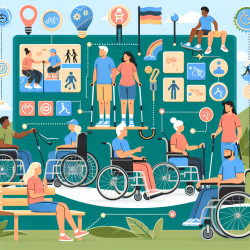Opioid Agonist Treatment: Lessons from India's Lockdown Experience
The COVID-19 pandemic and subsequent lockdowns have posed unprecedented challenges across various sectors, including healthcare. In India, these challenges have been particularly pronounced in the realm of opioid agonist treatment (OAT) for individuals with substance use disorders (SUD). This blog delves into the adaptations and challenges faced by OAT programs during the SARS-CoV2 outbreak in India, based on the research by Ghosh, Singh, and Dutta (2020).
Understanding the Challenges
India's lockdown, which began on March 24, 2020, restricted movement and limited access to essential medical services. This has had a disproportionate impact on individuals with SUD, who already face significant barriers to treatment. A nation-wide survey highlighted a treatment gap of 75-80% for drug use disorders, and the pandemic has likely widened this gap further.
Adaptations in OAT Programs
Despite these challenges, OAT programs in India have shown remarkable resilience and adaptability. Key adaptations include:
- Bi-weekly or alternate day dispensing of buprenorphine for patients, reducing the need for daily clinic visits.
- Takeaway methadone for one day, allowing patients to minimize travel.
- Extended clinic hours to accommodate more patients while maintaining social distancing.
- Mobile registration and dispensing initiatives in regions like Kapurthala, Punjab.
Lessons for Practitioners
Practitioners can draw several lessons from the Indian experience to enhance their OAT programs:
- Increase Availability: More centers and trained professionals are needed to meet the demand for OAT. Practitioners should advocate for increased investment in OAT infrastructure.
- Enhance Access: Consider alternative delivery models like mobile dispensing and postal delivery, while ensuring measures to prevent misuse.
- Improve Acceptability: Flexibility in dispensing medications for longer durations can improve treatment acceptability. Practitioners should explore the feasibility of these measures.
- Limit Barriers: Legal and attitudinal barriers need to be addressed through advocacy and public awareness campaigns.
- Engage Stakeholders: Collaboration among clinicians, policymakers, patients, and families is crucial to develop a user-friendly OAT policy.
Encouraging Further Research
The adaptations in India's OAT programs during the pandemic provide a valuable case study for further research. Practitioners are encouraged to investigate the long-term impacts of these changes and explore innovative solutions to improve OAT delivery.
To read the original research paper, please follow this link: Opioid agonist treatment during SARS-CoV2 & extended lockdown: Adaptations & challenges in the Indian context.










